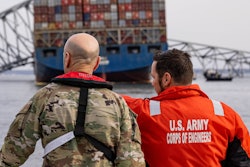
Hurricane Sally made landfall as a Category 2 storm just before 5 a.m. Central Time Wednesday, Sept. 16, at Gulf Shores, Alabama, with high winds and heavy rain affecting areas from around the Mississippi/Alabama border through much of the Florida panhandle.
(This is a developing story, which we will update as developments warrant.)
On Tuesday, Sept. 15, the Federal Motor Carrier Safety Administration issued a regional emergency declaration for Alabama, Florida, Georgia, Louisiana, and Mississippi, allowing carriers providing emergency relief in the affected areas to waive the hours of service regulations.
The waiver applies to carriers providing direct assistance supporting emergency relief efforts transporting supplies, goods, equipment and fuel.
The agency also waived the Temporary Operating Authority Registration fee for carriers requesting temporary authority to provide direct assistance to emergency relief efforts.
The National Hurricane Center this morning reported the center of Hurricane Sally was located inland about 20 miles west of Pensacola, Florida, and has maximum sustained winds of 85 mph. It is rated as a category 1 hurricane and is expected to drop as much as 35 inches of rain.








